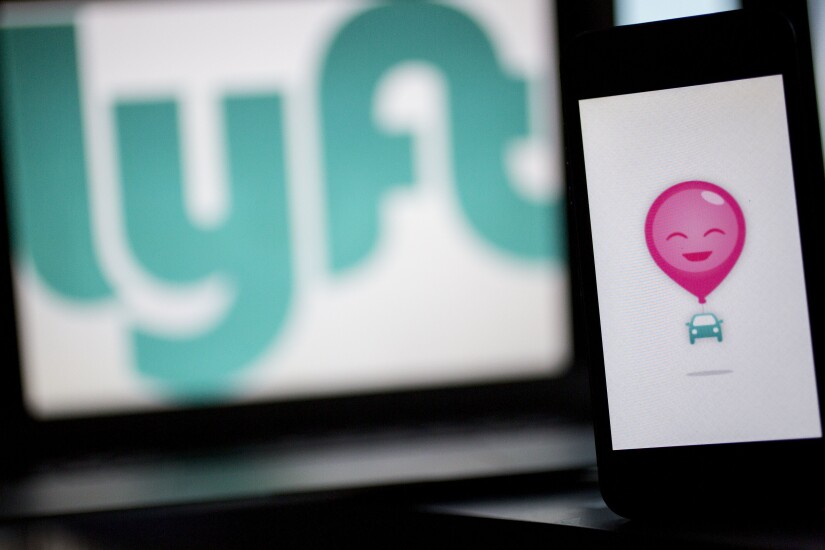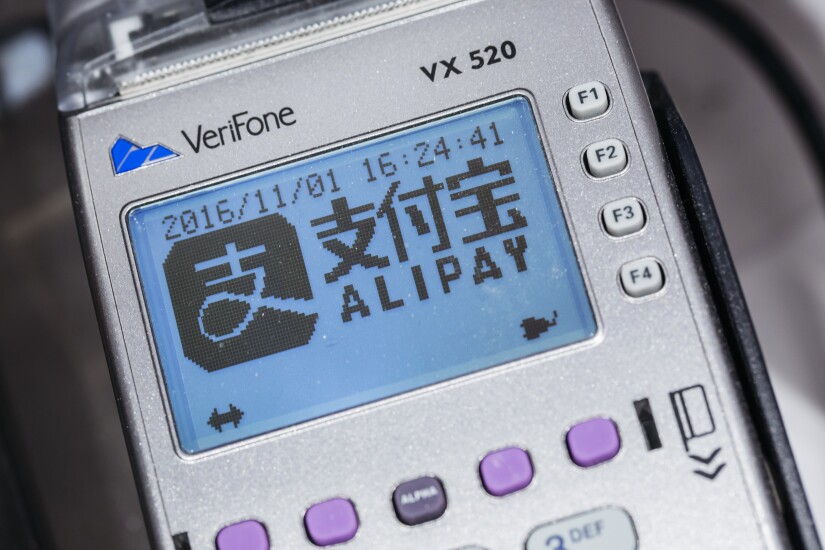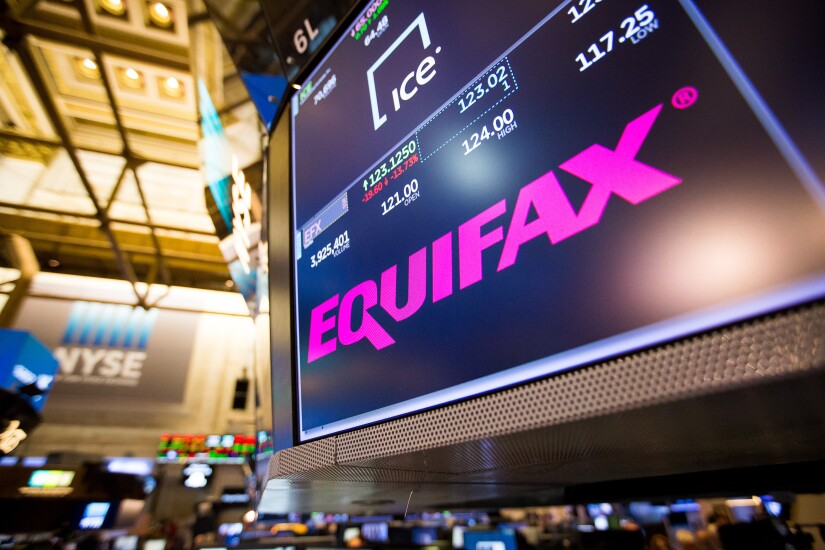

An Uber wallet?
“There’s been a strategic error on the part of … the ‘Pays’ — whether it’s Android or Samsung or Apple — in some ways, in marketing the physical point of sale ‘Gee whiz, tap your phone’ aspect of the wallet, when in reality that’s not the thing that’s broken,” said Brian Crist, chief payments counsel for Uber Technologies, at SourceMedia’s annual PayThink conference.
This is more than just a gripe that Crist wants resolved; Uber and Lyft had both indicated that they could take matters into their own hands to address the shortcomings of the current crop of mobile wallets.
Uber’s approach would use application programming interfaces (APIs) to duplicate what the Octopus card in Hong Kong does in handling both transit fare and purchases at local merchants.
“What we’re working on, I don’t even want to call it a wallet,” Crist said. “One thing that we continue to look at is trip experience … could you pay for a restaurant, for example? Could you pay for your theater tickets through the experience?”
These are specific needs that are linked to the Uber ride, and merchants would have to enable those through APIs, Crist said. If this project is implemented as he described, it would indeed fall short of the definition of an open-loop wallet, but it would also bypass Apple Pay, Android Pay, Samsung Pay or any bank-branded wallet as the payment mechanism for those merchants.

Lyft demands faster payments
From the consumer’s perspective, the most important task for
But drivers need cash right away to cover their own costs, including gas while they are still on the road.
“There is a compelling need today to solve this. We are faced with it on a day to day basis and we have been faced with it for years,” said Ashwin Raj, Lyft’s vice president of payments, in a presentation at SourceMedia’s annual PayThink event.
“My driver who needs to pay for his gas to provide the next drive cannot wait for Same Day ACH. They need those funds immediately,” he said.
For them, the best option is Express Pay, Lyft’s branded version of Visa Direct and Mastercard Moneysend, which operates via debit card transactions. Express Pay “has become such a significant part of our services that the majority of our drivers are using it” to receive funds within 30 minutes, Raj said.
“It’s a good story so far, but there is a ‘but,’” he said.
Express Pay works only for drivers who enroll a debit card, rather than a prepaid card or a bank account number. There is no near-real-time option for drivers who do not have or do not want to use a debit card; for them, the best option is standard ACH.
“We can’t say to a driver, ‘You have to put in a certain instrument to get your funds,’” Raj said. “That is the problem we’re trying to solve for.”

Alipay's data play
Alipay users consult the mobile app an average of 14 to 15 times a day, and each visit generates data. Alipay captures this data and plows it back into the app to sharpen the experience for consumers and merchants, Badran said during a keynote speech at SourceMedia’s PayThink conference.
“Whenever someone opens the Alipay app, we track it, so we can let merchants know where users are and we can notify Alipay users of nearby services, with deals and coupons, based on their location,” Badran said.
Alipay’s data engines analyze travelers’ activity with the app before, during and after their international trips, anticipating their plans and purchases, providing tips, reviews and even detailed descriptions and maps of stores users intend to visit.
“If an Alipay user is heading to San Francisco, we can offer them a coupon for a deal at Pier 39, so we may see a conversion rate of up to 42% on that coupon before they even go on the trip,” Badran said.
Alipay also monitors weather, sports and world political events to shape its deals and offers, and encourages users to share feedback about the stores, restaurants and sites they visit.
“We want consumers to think of Alipay as a digital lifestyle, and data analysis is a big part of that,” Badran said.

Zelle's first steps
The new version,
This has opened up new use cases beyond simple tasks such as millennials splitting rent payments. The new use cases are "generational," such as splitting costs for a family reunion, according to Lou Anne Alexander, group president of payments for Early Warning, which operates Zelle.
Those use cases could exist in other P-to-P apps, but non-millennials didn't consider those apps accessible. "They may have heard about P-to-P but ... didn't really know how to use it," Alexander said at SourceMedia's annual PayThink event.
In its plea for ubiquity, Zelle also has a standalone app that lets customers of any U.S. financial institution make transfers — within reason. At least one party to the transfer must use a Zelle bank, Alexander said.
"If you run out and download the Zelle app, we do not allow, for instance, a customer who is in an out of network financial institution to pay another out of network financial institution consumer, and that's because of our liability structure," she said. "I have to have somebody in that transaction take the liability."
In exchange for taking on the liability, banks get control of aspects such as transfer limits. "The app is meant for ... trying to garner that ubiquity, but it is our intent that every financial institution play," Alexander said.
P-to-P can also be a huge cost savings, according to Mary Harman, managing director for payments at Bank of America.
"We find the most costly transaction for us is when someone goes up an takes money from the teller. And there are a lot of people that still do that ... but that is orders of magnitude more expensive for us than the ATM, than the check, than any of the card-based transctions, and then we get to Zelle at the end," Harman said. "And so it isn't actually a revenue play, it's an expense-saving play."

Selling Same Day ACH
After Nacha, the electronic payments association, enabled Same Day ACH credits a year ago, use cases for the service started popping up immediately. And in many cases, they were hard to predict.
The very day that Same Day ACH credits went live, “we actually did have a client call that Friday morning and said, ‘Oh my gosh, we forgot to send our payroll, is there anything — ANYTHING — you can do?’” said Laura Lee Orcutt, head of product and treasury management for Wells Fargo, at the PayThink event. “If [that client] had called us yesterday, we really didn’t have an option.”
Another example is employee expense reimbursement. One company was able to solve its problem of employees forgetting to file their expenses by promising to send reimbursement the same day, Orcutt said.
Faster payment options are best sold on their use cases, and they won’t be a fit for every client or every scenario, said Jan Estep, president and CEO of Nacha, at PayThink.
“How do you start that conversation with your customers? It’s not, ‘Do you want to use Same Day ACH?’” Estep said.

After Equifax
Whatever the long-term effects will be, one thing is immediately clear: Social Security numbers are no longer as valuable as they used to be.
"[Know Your Customer] requirements were written for a world that expects some privacy of Social Security numbers," said Zach Perret, co-founder and CEO of the fintech company Plaid, at the PayThink event.
"The assumption that we previously held, which was that Social Security numbers and driver's license numbers are relatively private ... that's now gone. Beyond how Equifax changes credit scoring, there's a big question about how Equifax changes identity validation," he said.
This is a distinctly separate issue from fraud detection, Perret said. Bank accounts and card numbers can be shut down and reissued, but banks can't do the same for Social Security numbers and other identity factors.
"On the fraud side, there's a ton of work we can do, including multifactor authentication," he said, but "the KYC requirements are pretty explicit ... so that needs to be updated."

Rethinking security
With the Zelle app, for example, "we might not always ask you for a password, but don't think we're not secure," said Lou Anne Alexander, group president of payments at Early Warning, at SourceMedia's annual PayThink event.
Even when Zelle does prompt for a password, it may not be necessary.
"We will not always ask you for a password, but don't think we're not secure," Alexander said. "We're doing a lot of things behind the scenes that are unobtrusive. I worry a bit that folks might think it's not secure, that we might have to do a little of what we call security theater and throw a roadblock up every now and then, but we do know enough about the device [and] your interaction with it to clearly understand whether it's you or not."
But not all technology improves security as intended. With EMV, fraudsters were quick to find workarounds.
"We've seen a number of examples of fraudsters convincing those checkout folks to type in their number and bypass the chip ... that's obviously not why we all have spent so much money as an industry [on EMV]. That defeats the whole purpose," said Jason Martin, senior vice president of checking and debit product management at Bank of America.
As expected, fraudsters are targeting card-not-present sales, which get no benefit from EMV security, but they are also paying more attention to other low-tech financial instruments.
"It goes back to even checks, too," Martin said. "Fraudsters will try to go back to the weakest link that they can find, and we're seeing that across the board."
Sometimes the merchant bypasses EMV on its own, due to a miscommunication, said Kathy Yee, senior vice president of debit and prepaid cards product management at Wells Fargo.
"We've had situations ... where there are little post-its put on machines that said Wells Fargo cards didn't work," Yee said. "It ended up being not true — it was something in the implementation or something like that — but that little post-it is very painful in trying to communicate to our customers."

Taming the Internet of Things
Financial and technology companies could simply stick to tokenization — the same security applied to Apple Pay and other mobile wallets — but even that has its limits.
"One thing that probably we don't want is actually a lot of tokens everywhere, because the banks have to manage them," said Arif Ahmed, senior vice president of mobile banking and emerging tech innovation at U.S. Bank.
"Some level of abstraction is required, so we have to think it through before we just tokenize everything, every device," he said at SourceMedia's annual PayThink event.
Samsung has been at the forefront of IoT payments, with initiatives such as a payment-enabled refrigerator and its own Samsung Pay wallet, so it has already begun tackling this issue.
Sang W. Ahn, vice president and general manager for Samsung Pay, said Samsung is planning to announce more aspects of its IoT strategy at its developers conference in October.
That strategy will, naturally, focus on the consumer's mobile device as a hub for IoT payments.
"There will be a lot more central intelligence from the mobile device controlling those endpoints and referring back to the mobile device for persistent and periodic authentication ... because we know that mobile device is with [consumers] everywhere," Ahn said.

Digital isn't enough
"It's got to be someone's job" to lead a bank or credit union's digital strategy, said Stephen Bohanon, founder and chief strategy and sales officer of Alkami Technology, at SourceMedia's annual PayThink event.
Digital is "by far your largest branch. You wouldn't have a branch without a branch manager, right?" Bohanon said. "The same thing when it comes to your digital strategy ... there's got to be someone whose job it is."
Bohanon likened technology to sales, where every employee may have a sales role but there is still one or more people whose job performance is based on goals and quotas.
That said, there also has to be some restraint. "Don't innovate just for innovation's sake," he said. "If I had a nickel for everyone who told me you have to build a Google Glass interface..."
The focus has to be on technology that the financial institution's audience uses and expects, said Michael Mattone, vice president of public relations for Municipal Credit Union.
"For us, as a credit union, we needed to have a good reflection on the fact that our digital offerings weren't attracting younger consumers," Mattone said. "In every twelve-month cycle, our average member's age increased 10.25 months."
As the credit union examined its technology, it had to make sure it was looking at the whole picture — including face-to-face interactions in the branch.
"Part of being more innovative is also what your employees are looking at," Mattone said. "If you can bring in a digital solutions and technological solutions that allow your employees to serve your members more quickly and more efficiently ... it increases the level of appreciation and loyalty that members will have for you."
There is a lot of discussion around the speed of payments and availability of funds; in the modern world, consumers are baffled that it can take longer to get money transferred digitally than it does to get a physical product delivered by Amazon.
"One thing we can't control is the calendar," Mattone said. A single day could be crucial to a consumer, depending on which day of the month it is.
"The difference between the 31st and the 1st of the month ... that can be rent," Mattone said. "Getting it there on the day due instead of the day after [avoids] incurring additional fees."





